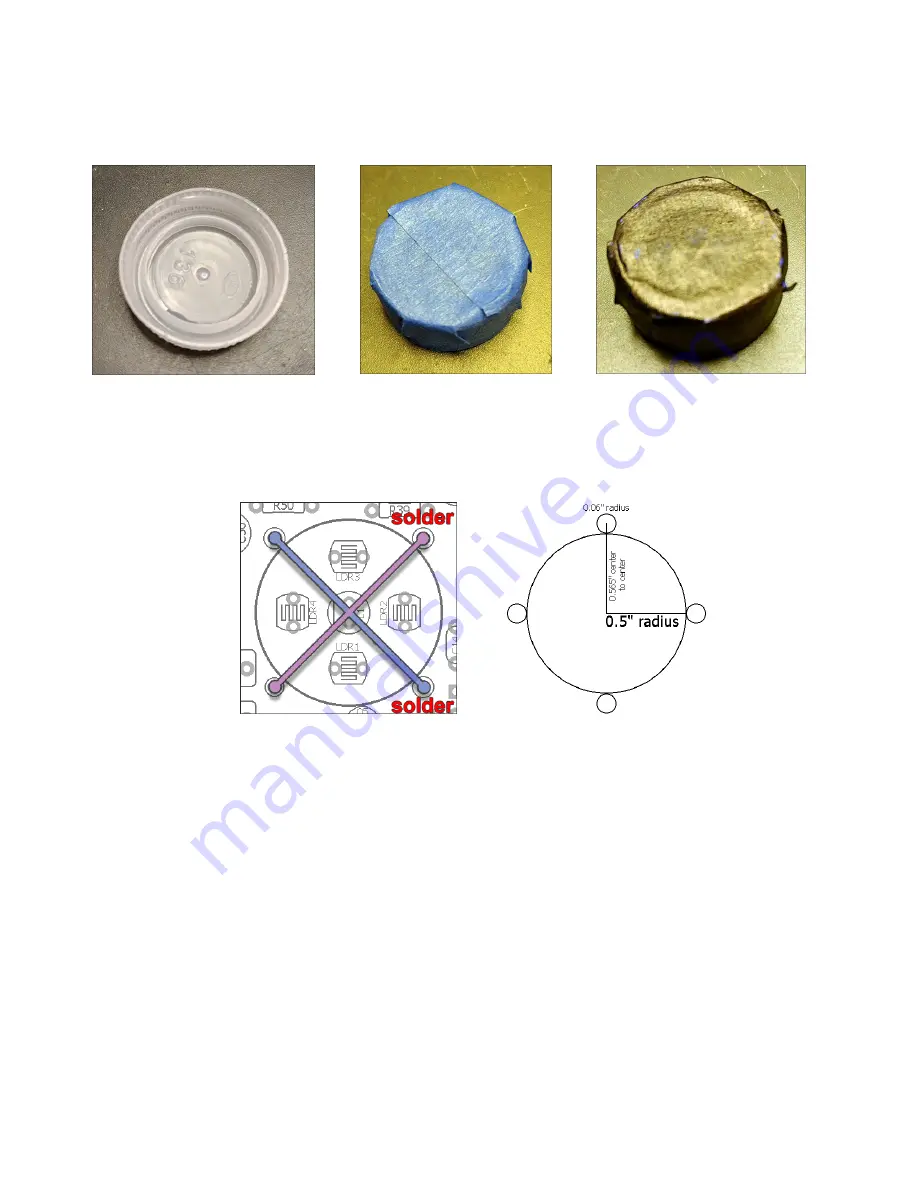
Light Shield
I do hope to be able to include a 3d printed light shield with this project. I may be able to do so by the time the boards start
shipping. But, in case it doesn’t work out here is an easy way to make one: 1) water bottle cap, 2) cover it in one layer of
painter’s tape, and 3) use a black Sharpie to mask out the tape.
To affix the light shield, I recommend the following: solder some buss wire the two the mounting holes on the PCB. Then
just bend them over and insert in the opposite side to keep the shield in place. You don’t need to solder all four positions.
In fact, don’t! You want to be able to remove the shield in case you need to visually inspect the lamp when making adjust
-
ments. Exact measurements of the light shield below. Alternatively, you could solder one wire in each spot and then twist
them together over the top of the shield. Whatever works for you.
Lamp Calibration
The GAIN and OFFSET controls are interactive. Use this procedure to calibrate the lamp
•
Turn Intensity and Volume controls all the way up. Set the Speed control at about half-way.
•
Turn the GAIN control up until you get moderate, but not overly bright lighting of the lamp.
•
Now adjust the OFFSET control to find the sweet spot for the vibe where you get the most lush and swirly sounds.
The OFFSET will set the lower floor for the lamp brightness. High amounts of offset result in a lamp that goes fully off at
the bottom of its sweep. Moderate and light offset means the lamp will pulse but never go fully dark. You will probably find
yourself adjusting the GAIN and OFFSET a few times until you get the precise sound you want. I set my lamps to go fully
dark to moderate brightness and get great results with that.
Be careful when adjusting the trimmers so that the lamp does not blow. I have yet to do this in any build no matter where I
set the trimmers, but it is possible to do. Lastly, you should consider turning off your power supply or disconnecting the DC
jack when not in use. This will preserve the life of the lamp considerably.































